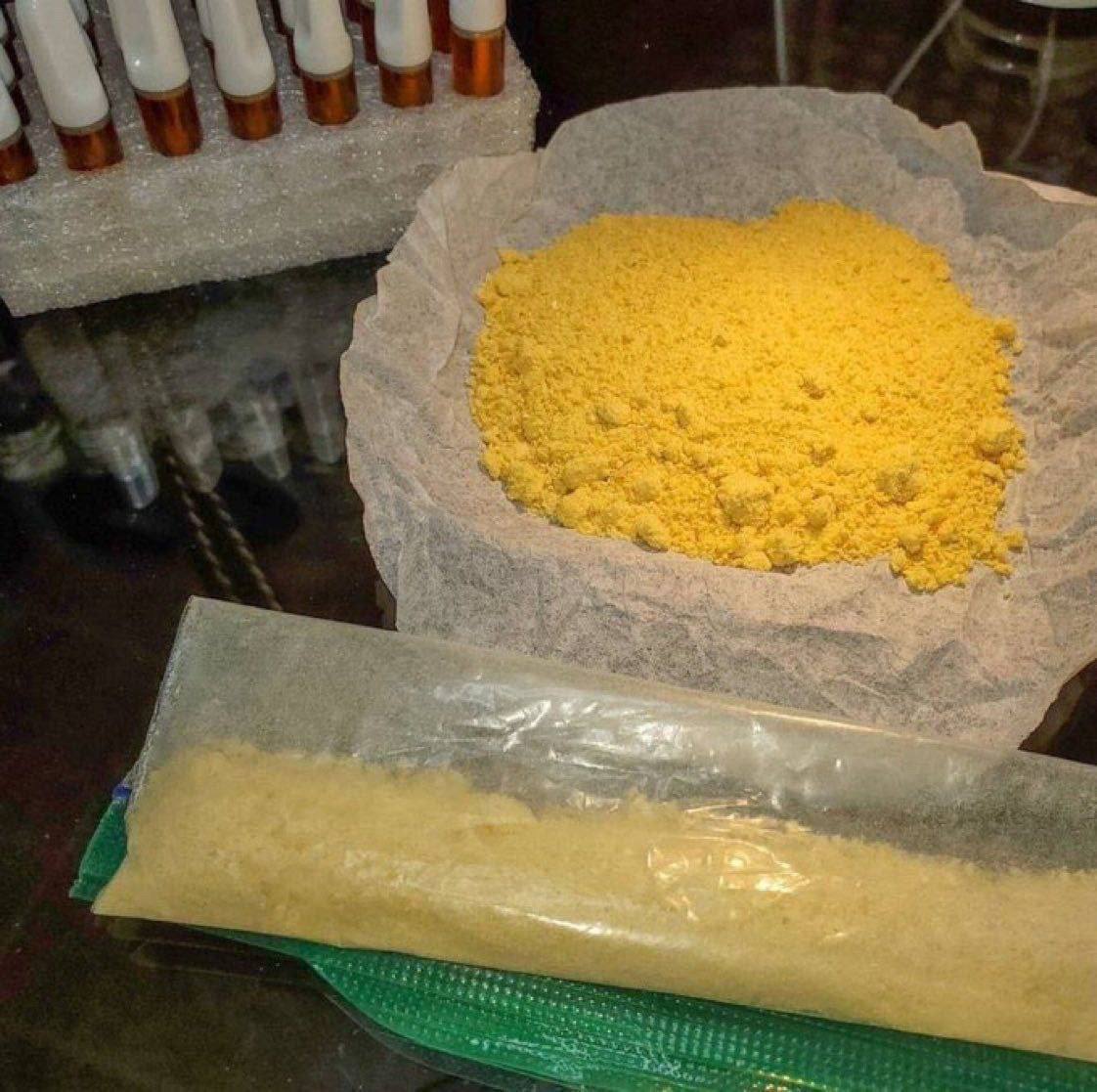Buy 4F-AMB
$155.00 – $1,900.00
Description
4F-AMB: Understanding a Potent Synthetic Cannabinoid
Introduction
4F-AMB, also known as 4-fluoro-AMB, is a synthetic cannabinoid that has gained attention in the research community for its powerful effects on the endocannabinoid system. This compound is part of the indazole-based synthetic cannabinoids, which are known for their strong binding affinity to cannabinoid receptors. As synthetic cannabinoids continue to be a focus of scientific study, 4F-AMB stands out due to its potency and the insights it offers into the pharmacology of cannabinoids. In this article, we’ll explore the properties of 4F-AMB, its uses in research, safety precautions, and its legal status.
What is 4F-AMB?
4F-AMB is a synthetic cannabinoid that mimics the effects of naturally occurring cannabinoids like THC but with much greater potency. It is chemically related to other synthetic cannabinoids in the indazole-3-carboxamide family and is designed to interact with the body’s endocannabinoid system. 4F-AMB is primarily used in research settings to study the effects of synthetic cannabinoids on the CB1 and CB2 receptors, helping scientists understand both the potential therapeutic applications and the risks associated with these compounds.
Key Features and Properties of 4F-AMB
- High Potency: 4F-AMB is known for its high potency, meaning it can produce significant effects even at very low doses. This makes it an important compound for researchers studying the effects of cannabinoids on the body.
- Chemical Structure: 4F-AMB is characterized by the presence of a fluorine atom in its structure, which contributes to its high binding affinity for cannabinoid receptors. Its chemical makeup allows it to strongly influence the endocannabinoid system, particularly through CB1 and CB2 receptor activation.
- Research Applications: 4F-AMB is used in scientific research to explore various aspects of cannabinoid pharmacology, including receptor binding, pharmacokinetics, and potential therapeutic uses. It is not intended for human consumption.
- Legal Status: The legal status of 4F-AMB varies by region, with many countries classifying it as a controlled substance due to its potency and potential for misuse.
How 4F-AMB Works
4F-AMB works by binding to cannabinoid receptors in the endocannabinoid system, which is responsible for regulating various physiological processes such as mood, appetite, pain sensation, and immune function. The compound has a high affinity for both CB1 and CB2 receptors, which allows it to produce effects that are much stronger than those of natural cannabinoids like THC.
- CB1 Receptors: Found primarily in the brain and central nervous system, CB1 receptors are associated with the psychoactive effects of cannabinoids. 4F-AMB’s strong interaction with these receptors can lead to intense psychoactive effects.
- CB2 Receptors: Located mainly in the immune system and peripheral tissues, CB2 receptors play a role in anti-inflammatory responses. 4F-AMB’s binding to these receptors may influence immune responses and inflammation.
Potential Uses and Applications
Although 4F-AMB is not intended for human consumption, it is widely used in research to study the effects of synthetic cannabinoids on the endocannabinoid system. Some of the key areas of research include:
- Pharmacological Studies: Researchers use 4F-AMB to investigate the pharmacokinetics (how the compound is absorbed, distributed, metabolized, and excreted) and pharmacodynamics (how it affects the body) of synthetic cannabinoids.
- Therapeutic Potential: The compound is studied for its potential therapeutic applications, such as pain management, anti-inflammatory effects, and neuroprotection.
- Toxicology Research: Understanding the toxicity and safety profile of 4F-AMB is crucial for assessing the risks associated with synthetic cannabinoids and for developing guidelines for safe use in research.
Safety and Precautions
Due to its high potency, 4F-AMB should be handled with extreme care in research settings:
- Research Use Only: 4F-AMB is intended strictly for research purposes and should not be used recreationally or for human consumption.
- Proper Handling: Researchers should use appropriate personal protective equipment (PPE) and follow strict safety protocols to prevent accidental exposure or contamination.
- Health Risks: Improper handling or misuse of 4F-AMB can lead to severe health risks, including intense psychoactive effects, anxiety, hallucinations, and cardiovascular issues.
- Legal Compliance: It is essential to comply with local and international regulations regarding the use, possession, and distribution of synthetic cannabinoids like 4F-AMB.
Legal Status of 4F-AMB
The legal status of 4F-AMB varies by country and region. In many places, it is classified as a controlled substance due to its high potency and potential for abuse. Researchers must be aware of the legal regulations governing synthetic cannabinoids in their area to ensure compliance and avoid legal complications.
Conclusion
4F-AMB is a potent synthetic cannabinoid that plays a significant role in research focused on the endocannabinoid system and the effects of cannabinoids on the body. Its strong binding affinity to CB1 and CB2 receptors makes it an invaluable tool for studying both the therapeutic potential and risks of synthetic cannabinoids. However, due to its high potency and potential health risks, 4F-AMB should only be used in controlled research environments by trained professionals. As the field of synthetic cannabinoid research continues to evolve, compounds like 4F-AMB will remain essential in advancing our understanding of cannabinoid pharmacology and developing new therapeutic strategies.
Additional information
| choose an option | 10g, 50g, 100g, 500g, 1kg |
|---|







Reviews
There are no reviews yet.